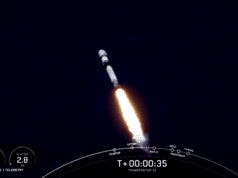
US: GIS tools can be proved useful for monitoring elephant poaching, according to Penn State researchers. The researchers made the conclusion based on a study done in Tsavo, a region in southwest Kenya that is home to country’s largest elephant population. The researchers tried to identify methods that local conservation groups could use to reduce poaching.
They sought to understand geographic similarities among elephant poaching locations, analyzing the geographic features of 156 known locations occurring in the 8,150-square-mile area in the Tsavo region. Nearly 69 percent of poaching instances occurred within 1.5 miles from a road and 62 percent occurred within 2.5 miles from lakes, rivers or other water features, the researchers reported in the current issue of Tropical Conservation Science.
“We know that elephants need water, and it makes sense that poachers would exploit that by looking for elephants in those areas.” said Michael Shaffer, who conducted this research while a student in the master of geographic information systems program taught through Penn State World Campus. He added, “At the same time, poachers need roads for quick access into and out of elephant habitats. These locations seemed intuitive, but we were trying to confirm how statistically important they were.”
Finding high-risk poaching areas was critical, the researchers said, as recent studies show that conservation efforts focused on high-value areas are more effective than patrolling the entirety of vast habitat regions. Elephants routinely travel 20 to 40 miles in a day, making their habitat one of the largest for terrestrial mammals. To monitor the region, the researchers proposed that conservation groups employ the use of unmanned aerial vehicles – drones.
“The idea of using a drone in an area where it’s challenging to do conservation work is coming up more and more because, in the case of Africa, where you’ve got multiple large animals that move long distances day to day, the idea of trying to monitor them and protect them is daunting,” said Joseph Bishop, instructor, John A. Dutton e-Education Institute, Penn State. “Using drones doesn’t cost as much as using a helicopter, and it also keeps people out of danger from being attacked by poachers.”
Source: Eurekalert




